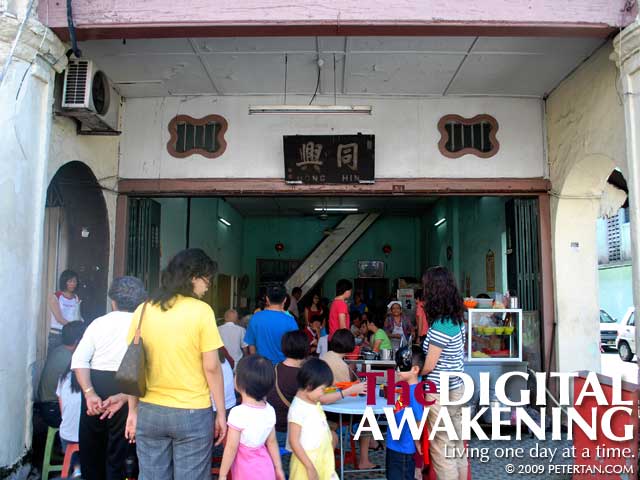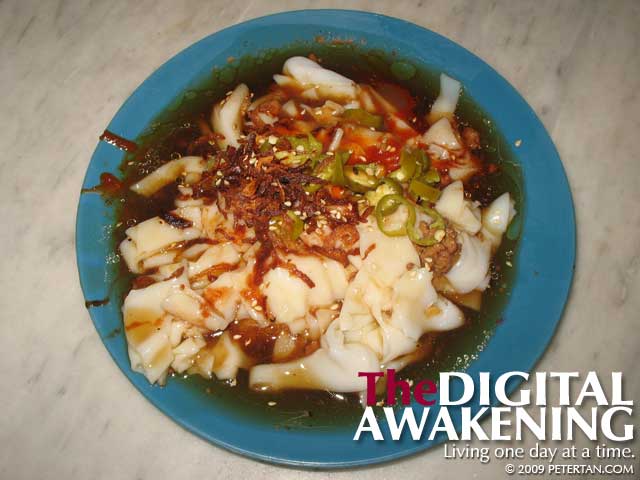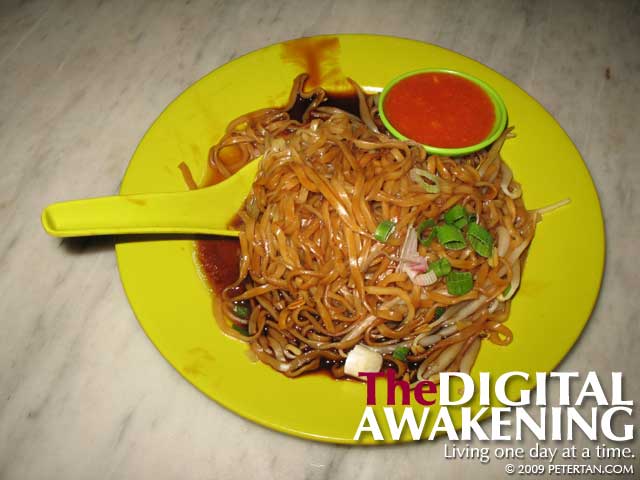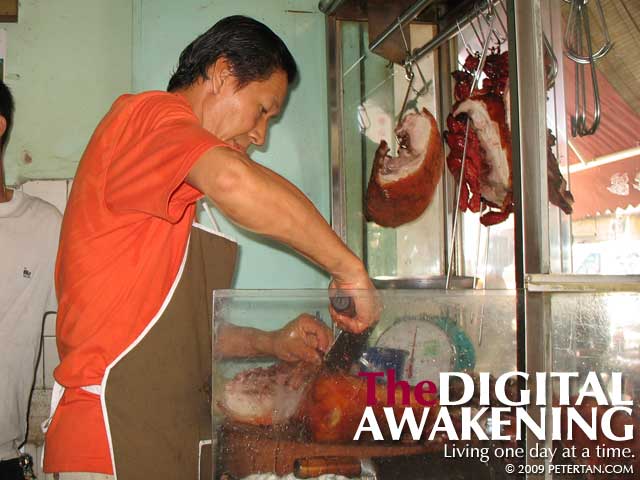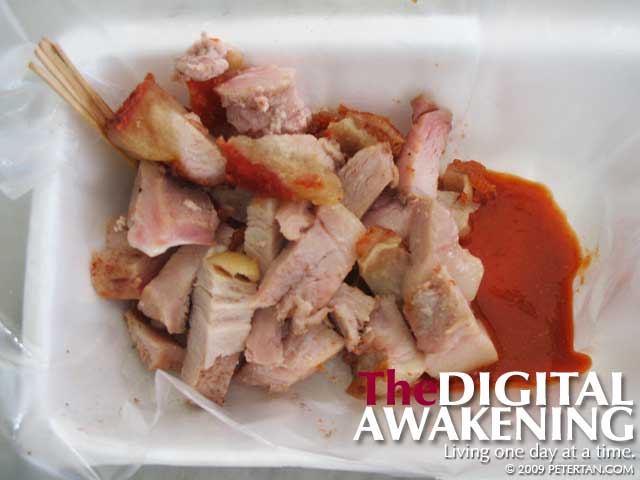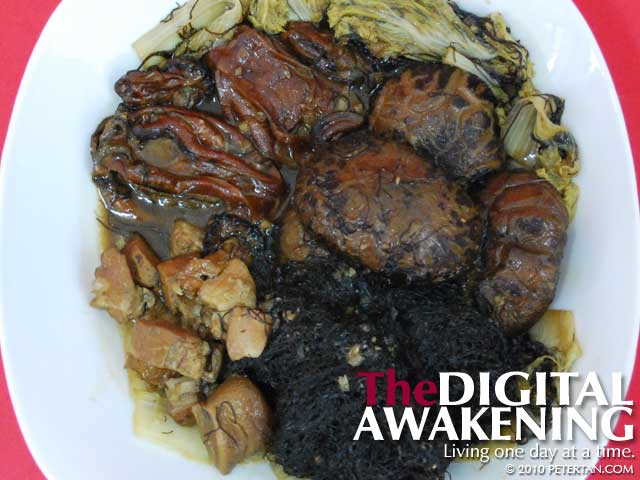
Braised dried oyster with black moss – Hou Si Fatt Choy.
When I wrote about eating my last festive cuisine in 2005, I really though I would never get the opportunity to savour hou si fatt choy again. That was five years ago. From then till now, I have diligently maintained a low-protein low-purine and low-salt diet. At the same time, I perform the clean intermittent catheterisation on schedule and take Detrusitol as prescribed. Those effort has paid off. The deterioration of my renal function has stabilised.
For this Chinese New Year, Wuan and I decided to cook this auspicious dish. Most of the restaurants that we patronised for our Chinese New Year meals did not have it in their menus. We used the recipe as a guide but did not adhere to the portions strictly. After all, to me, cooking is not an exact science. As long as we get the taste right, a little bit more of this and a little less of that would not make much difference.
Wuan bought eight extra-large dried oysters, black moss and shiitake mushrooms from one of the Chinese grocery shops in Petaling Street. During one of our weekend grocery shopping trips, we bought a small bottle of oyster sauce and a bottle of thick soya sauce. The day before we were to cook the dish, Wuan bought 300gms of roasted pork belly and half a head of Chinese cabbage from the wet market in Pandan Perdana.
This dish is actually very easy to prepare. The only ingredients that need cutting are the Chinese cabbage, garlic, shallots, ginger and removing the stem from the shiitake mushrooms. Wuan got the siu yuk seller to cut the roasted pork to size. We used only four of the extra large oysters and added four smaller ones that she usually used for soups. The dish turned out nicely.
The intense aroma from the mushrooms and dried oysters that wafted from the kitchen made me salivate long before the dish was ready to be served. The mushrooms were soft. So was the black moss. Overall, we liked it very much. I am looking forward to the next Chinese New Year already so that I can get to savour this dish again. Below is the recipe we used for this time with some variations from the previous one. We hope you will enjoy it as much as we did. Bon appetit.
Hou Si Fatt Choy (Braised Dried Oysters with Black Moss)
Ingredients:
4 extra large dried oysters,
4 dried oysters
soak in enough warm water to cover for 1 hour
20 g black moss, soak in 1 cup warm water for 30 minutes and drain
300g roasted pork, cut into 1 cm thick portions
8 large shiitake mushrooms, remove stem, soak in enough water to cover and leave overnight
1/2 head of Chinese cabbage, cut into 2″ strips
5 cloves garlic, chopped
5 shallots, chopped
3 slices ginger, bashed several times with the broad side of the kitchen knife
3 tbsp cooking oil
3 tbsp oyster sauce
1 tsp thick soy sauce
1/2 tsp sugar
1/2 tsp corn flour
a dash of sesame seed oil
Heat oil and saute garlic, shallots and ginger until fragrant. Add oyster and fry for another 1 minute. Add shitake mushrooms, roasted pork and sauces and stir fry for another minute. Add water from that the shiitake mushrooms and oysters were soaked in. Cover the kuali and let simmer for about 30 minutes. Check occasionally to ensure there is sufficient gravy. When the mushrooms becomes tender, add corn flour to thicken the gravy. Add the black moss and simmer for another 10 minutes before turning off heat. Serve with rice.


